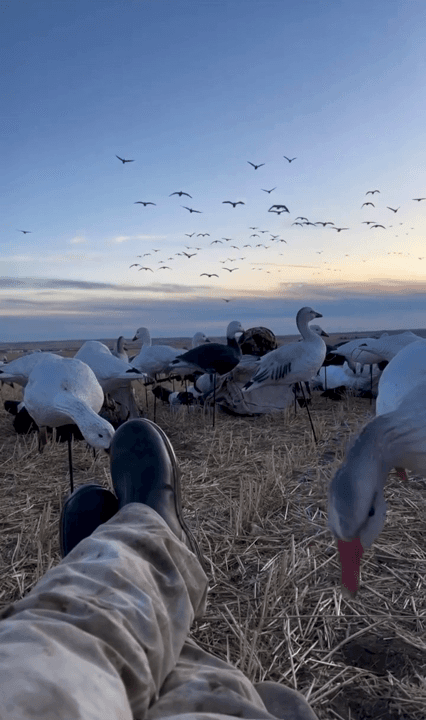
Hunting Seasons in SASKATCHEWAN (Canada): Official Season Periods, Permits & Vital Game Laws Saskatchewan is a premier destination for hunters, offering diverse game species and vast wilderness. Understanding the hunting seasons, regulations, and best periods for success is crucial for a legal and rewarding experience. Understanding Hunting Seasons in Saskatchewan Hunting seasons in Saskatchewan are set by the Ministry of Environment and vary by species, region, and method—archery, rifle, or muzzleloader. Key factors influencing season dates include wildlife population health, breeding cycles, and climate conditions. Harsher winters can sometimes shift opening or closing dates. The province is divided into Wildlife Management Units (WMUs), each with tailored rules to ensure sustainable hunting. Regional differences are clear across the province. In northern Saskatchewan’s boreal forest zones, moose and bear seasons tend to be longer due to lower hunting pressure. Southern prairie regions have tighter controls on deer and waterfowl hunting because of higher hunter numbers and habitat limitations. Compared to neighboring provinces like Alberta and Manitoba, Saskatchewan maintains similar moose and deer seasons but enforces stricter elk rules. Manitoba opens its waterfowl season earlier due to different migratory bird patterns. Recent regulatory changes aim to improve sustainability. In 2020, black bear seasons were adjusted to reduce overharvesting in some areas. In 2022, the white-tailed deer rifle season was extended in select WMUs to match growing populations. Key Seasons and Peak Activity in Saskatchewan Big game hunting includes moose from September 1 to November 30 depending on zone, with archery starting early. White-tailed deer season runs from early September through December, varying between bow and rifle use. Black bears can be hunted during two main periods: spring (April 15 to June 15) and fall (August 15 to November 30). For upland birds and waterfowl, ducks and geese have different season lengths based on location—northern zones open in September until mid-December, while southern zones extend into January. Pheasant and grouse hunting runs from mid-September to the end of December. The best hunting periods align with animal behavior and seasonal shifts. Early morning and late evening offer peak activity for deer and waterfowl. Rut season, peaking in late October and November, is ideal for white-tailed deer. Spring, particularly May, is prime time for black bear baiting. Saskatchewan hosts several popular hunting events. The Saskatchewan Wildlife Federation Expo in March brings hunters together for expert seminars, gear demos, and workshops. The Duck & Goose Calling Championships in the fall celebrate prairie waterfowl traditions with competitive calling contests. Restrictions and Protected Species in Saskatchewan To protect wildlife, the province enforces strict restrictions. Species such as bison, whooping crane, swift fox, and burrowing owl are fully protected. Hunting is prohibited during critical fawning (May–June) and nesting periods. Full closures apply in ecological reserves and sensitive habitats. Getting the Right Licenses and Permits in Saskatchewan Obtaining a license involves several steps. Residents need a Wildlife Identification Number (WIN) plus the appropriate license. Non-residents must hire an outfitter or apply through a draw system. Big game licenses for moose, elk, and antlerless deer require lottery applications submitted by June, while over-the-counter licenses for bear, waterfowl, and upland birds are available online or at vendors. First-time hunters must complete mandatory education, including firearms and hunter safety courses. Avoiding Fines and Hunting Responsibly Violating laws carries serious consequences. Hunting out of season may result in fines up to $100,000 CAD and possible firearm confiscation. Killing protected species leads to criminal charges and lifetime bans. Exceeding bag limits incurs penalties from $500 to $2,000 per offense. Hunting without proper tags starts at a minimum fine of $1,000. Tips for a Successful and Ethical Hunt in Saskatchewan For a successful hunt, timing matters. Early September suits archery deer hunting before foliage thickens; mid-October offers peak waterfowl migration; late November is best for whitetail rutting. Choosing the right gear also plays a role—lightweight clothing and scent control suit early-season hunts, while insulated gear is essential later. Waterfowl hunters benefit from species-specific decoys and high-quality calls. Tactical approaches should match terrain and target species. Topographical maps help identify natural funnels and transition zones. Setting up near agricultural fields increases chances of encountering deer in the evening. Scouting water sources during dry periods ensures consistent movement. Trail cameras provide insight into animal patterns before the season starts. Top hunting zones include the northern boreal forests (WMUs 50 and 55) for moose, and the prairie pothole region around Quill Lakes and Last Mountain Lake for waterfowl. Local knowledge helps—consult resident outfitters, join pre-season scouting trips, and monitor provincial wildlife reports. Saskatchewan offers some of Canada’s best hunting opportunities, but strict adherence to seasons and regulations is essential. Always check the annual Saskatchewan Hunting & Trapping Guide for updates before your trip.
Post: 14 August 14:51



